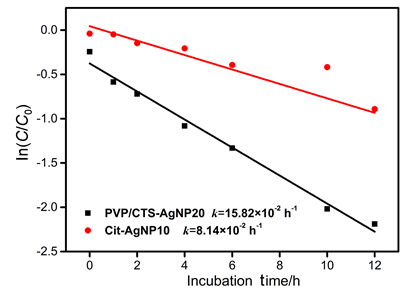| [1] http://www.nanotechproject.org/cpi (accessed Feb 20, 2017).
[2] Cao, X. L.; Tang, M.; Liu, F.; Nie, Y. Y.; Zhao, C. S. Colloid Surface B 2010, 8, 555.
[3] Fendorf, S.; Michael, H. A.; Van Geen, A. Science 2010, 328, 1123.
[4] Yu, G. Q.; Sun, D. J.; Zheng, Y. Environ. Health Persp. 2007, 115, 636.
[5] Berg, M.; Tran, H. C.; Nguyen, T. C.; Pham, H. V.; Schertenleib, R.; Giger, W. Environ. Sci. Technol. 2001, 35, 2621.
[6] Karn, S. K. Environ. Pollut. 2015, 207, 434.
[7] He, J.; Charlet, L. J. Hydrol. 2013, 492, 79.
[8] Clancy, T. M.; Hayes, K. F.; Raskin, L. Environ. Sci. Technol. 2013, 47, 10799.
[9] Smedley, P. L.; Kinniburgh, D. G. Appl. Geochem. 2002, 17, 517.
[10] Sadee, B.; Foulkes, M. E.; Hill, S. J. J. Anal. At. Spectrom. 2015, 30, 102.
[11] Kumar, A. R.; Riyazuddin, P. Trends Anal. Chem. 2010, 29, 1212.
[12] Yang, K.; Xing, B. S. Chem. Rev. 2010, 110, 5989.
[13] Tan, K. B.; Vakili, M.; Hord, B. A.; Poh, P. E.; Abdullah, A. Z.; Salamatinia, B. Sep. Purif. Technol. 2015, 150, 229.
[14] Pena, M. E.; Korfiatis, G. P.; Patel, M.; Lippincott, L.; Meng, X. G. Water Res. 2005, 39, 2327.
[15] Hu, S.; Shi, Q. T.; Jing, C. Y. Environ. Sci. Technol. 2015, 49, 9707.
[16] Kanel, S. R.; Greneche, J. M.; Choi, H. Environ. Sci. Technol. 2006, 40, 2045.
[17] Gibert, O.; de Pablo, J.; Cortina, J. L.; Ayora, C. Environ. Geochem. Hlth. 2010, 32, 373.
[18] Xia, X. F.; Hua, Y. L.; Huang, X. Y.; Ling, L.; Zhang, W. X. Acta Chim. Sinica 2017, 75, 594. (夏雪芬, 滑熠龙, 黄潇月, 凌岚, 张伟贤, 化学学报, 2017, 75, 594.)
[19] Huang, X. Y.; Wang, W.; Ling L.; Zhang, W. X. Acta Chim. Sinica 2017, 75, 529. (黄潇月, 王伟, 凌岚, 张伟贤, 化学学报, 2017, 75, 529.)
[20] Xi, B. D.; Wang, X. W.; Liu, W. J.; Xia, X. F.; Li, D. S.; He, L. S.; Wang, H. M.; Sun, W. J.; Yang, T. X.; Tao, W. Sep. Sci. Technol. 2014, 49, 2642.
[21] Holt, B. D.; Heraty, L. J.; Sturchio, N. C. Environ. Pollut. 2001, 113, 263.
[22] Palau, J.; Jamin, P.; Badin, A.; Vanhecke, N.; Haerens, B.; Brouyere, S.; Hunkeler, D. Water Res. 2016, 92, 235.
[23] Rittmann, B. E.; Stilwell, D.; Garside, J. C.; Amy, G. L.; Spangenberg, C.; Kalinsky, A.; Akiyoshi, E. Water Res. 2002, 36, 3387.
[24] Mascolo, G.; Ciannarella, R.; Balest, L.; Lopez, A. J. Hazard. Mater. 2008, 152, 1138.
[25] Jeong, C. H.; Postigo, C.; Richardson, S. D.; Simmons, J. E.; Kimura, S. Y.; Marinas, B. J.; Barcelo, D.; Liang, P.; Wagner, E. D.; Plewa, M. J. Environ. Sci. Technol. 2015, 49, 13749.
[26] Yates, M. V.; Malley, J.; Rochelle, P.; Hoffman, R. J. Am. Water Works Ass. 2006, 98, 93.
[27] Mecha, C. A.; Pillay, V. L. J. Membrane Sci. 2014, 458, 149.
[28] Liga, M. V.; Bryant, E. L.; Colvin, V. L.; Li, Q. L. Water Res. 2011, 45, 535.
[29] Muthu, K.; Priya, S. Spectrochim. Acta A 2017, 179, 66.
[30] Baruah, B.; Gabriel, G. J.; Akbashev, M. J.; Booher, M. E. Langmuir 2013, 29, 4225.
[31] Joseph, S.; Mathew, B. J. Mol. Liq. 2015, 204, 184.
[32] Xu, R.; Wang, D. S.; Zhang, J. T.; Li, Y. D. Chem.-Asian. J. 2006, 1, 888.
[33] Morallon, E.; Arias-Pardilla, J.; Calo, J. M.; Cazorla-Amoros, D. Electrochim. Acta 2009, 54, 3996.
[34] Yu, S. J.; Yin, Y. G.; Liu, J. F. Environ. Sci. Proc. Impacts. 2013, 15, 78.
[35] Levard, C.; Hotze, E. M.; Lowry, G. V.; Brown, G. E. Environ. Sci. Technol. 2012, 46, 6900.
[36] Yin, Y. G.; Liu, J. F.; Jiang, G. B. ACS Nano 2012, 6, 7910.
[37] Kloster, N.; Brigante, M.; Zanini, G.; Avena, M. Colloid. Surface. A 2013, 427, 76.
[38] Wang, J.; Liu, J. J.; Guo, X. H.; Yan, L.; Lincoln, S. F. Front. Chem. Sci. Eng. 2016, 10, 432.
[39] Priya, D. B.; Asharani, I. V. J. Clust. Sci. 2017, 28, 1837.
[40] Chakraborty, I.; Pradeep, T. Chem. Rev. 2017, 117, 8208.
[41] Majdalawieh, A.; Kanan, M. C.; El-Kadri, O.; Kanan, S. M. J. Nanosci. Nanotechnol. 2014, 14, 4757.
[42] Okumura, M.; Haruta, M.; Kitagawa, Y.; Yamaguchia, K. Gold Bull. 2007, 40, 40.
[43] Ishida, T.; Nagaoka, M.; Akita, T.; Haruta, M. Chemistry 2008, 14, 8456.
[44] Tan, Z. Q.; Liu, J. F.; Yin, Y. G.; Shi, Q. T.; Jing, C. Y.; Jiang, G. B. ACS Appl. Mater. Inter. 2014, 6, 19833.
[45] Xiu, Z. M.; Ma, J.; Alvarez, P. J. J. Environ. Sci. Technol. 2011, 45, 9003.
[46] Xu, H. Y.; Qu, F.; Xu, H.; Lai, W. H.; Wang, Y. A.; Aguilar, Z. P.; Wei, H. Biometals 2012, 25, 45.
[47] He, D.; Dorantes-Aranda, J. J; Waite, T. D. Environ. Sci. Technol. 2012, 46, 8731.
[48] Bryaskova, R.; Pencheva, D.; Nikolov, S.; Kantardjiev, T. J. Chem. Biol. 2011, 4, 185.
[49] Masscheleyn, P. H.; Delaune, R. D.; Patrick, W. H. Environ. Sci. Technol. 1991, 25, 1414. |
